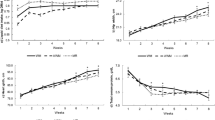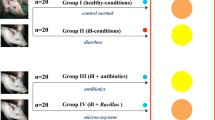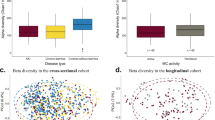Abstract
LARGE areas in and near Somerset are unsuitable for grazing because they cause severe diarrhœa in cattle. These areas, called 'teart', are found on the argillaceous Lower Lias. The disease has been shown1 to be due to an excess of soluble molybdates in the herbage and the soil ; it can be cured by adding copper salts to the diet. A possible explanation of the effect of molybdates is suggested by the following observations.
This is a preview of subscription content, access via your institution
Access options
Subscribe to this journal
Receive 51 print issues and online access
$199.00 per year
only $3.90 per issue
Buy this article
- Purchase on SpringerLink
- Instant access to full article PDF
Prices may be subject to local taxes which are calculated during checkout
Similar content being viewed by others
References
Ferguson, W. S., Lewis, A. H., and Watson, S. J., Nature, 141, 553 (1938); J. Agric. Sci., 33, 44 (1943).
Weinland, R. F., and Gaisser, F., Z. anorg. Chem., 108, 231 (1919).
Blaschko, H., Proc. Biochem. Soc., vi (1944).
Onslow, M. W., Biochem. J., 15, 107 (1921).
Buchanan, R. E., and Fulmer, E. I., "Physiology and Biochemistry of Bacteria", Vol. 3, 378 (London, 1930).
Onslow, M. W., and Robinson, M. E., Biochem. J., 19, 420 (1925).
Raper, H. S., Biochem. J., 20, 735 (1926).
Author information
Authors and Affiliations
Rights and permissions
About this article
Cite this article
MCGOWAN, J., BRIAN, P. Inhibition of Catechol Bacteriostasis by Molybdates. Nature 159, 373 (1947). https://doi.org/10.1038/159373a0
Issue date:
DOI: https://doi.org/10.1038/159373a0
This article is cited by
-
Molybdenum toxicity: Interactions between copper, molybdenum and sulphate
Agents and Actions (1976)
-
Uptake of Amino Acids Into Pig Skin in Organ Culture and the Effect of Inhibitors of Respiration, Protein Biosynthesis and Tyrosinase*
Journal of Investigative Dermatology (1969)



